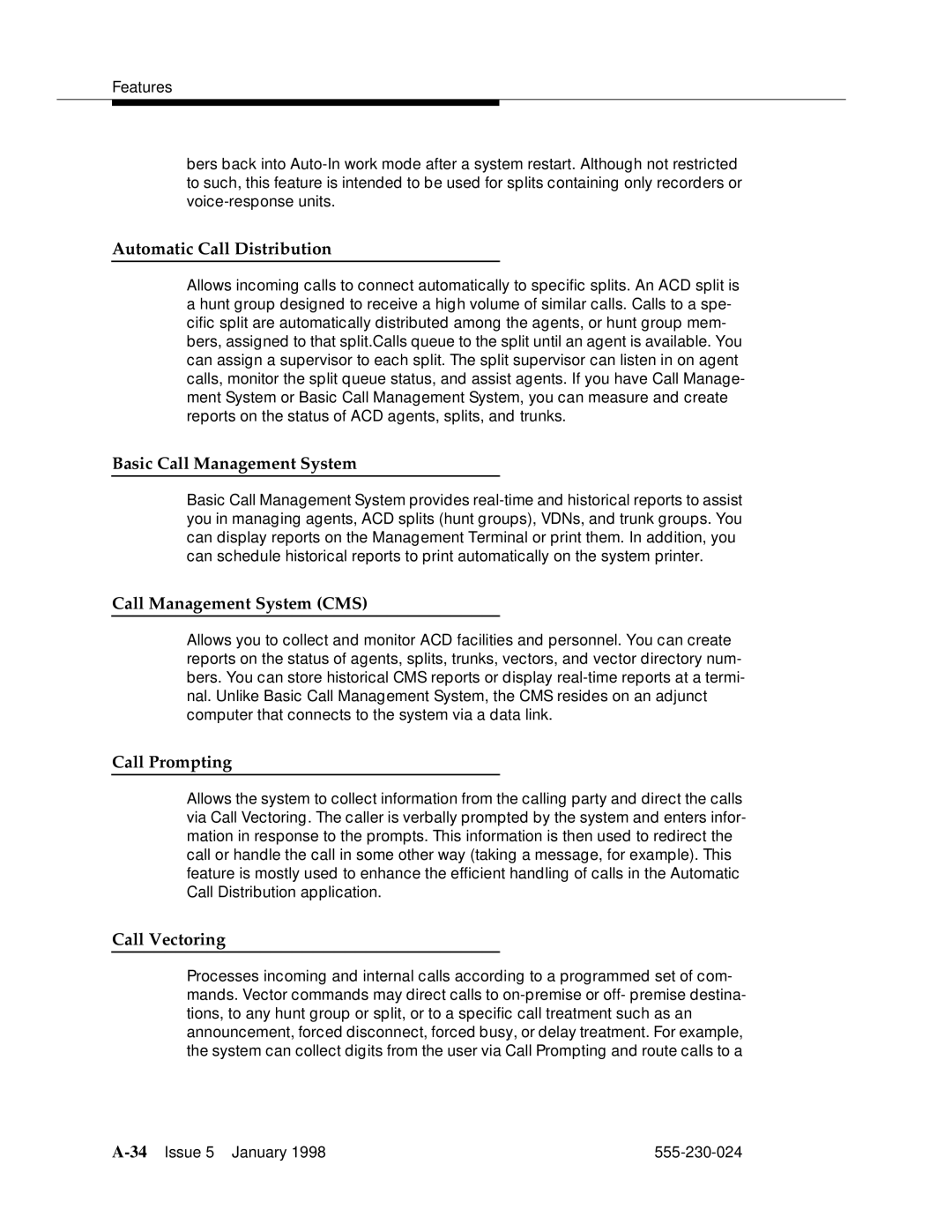
Features
bers back into
Automatic Call Distribution
Allows incoming calls to connect automatically to specific splits. An ACD split is a hunt group designed to receive a high volume of similar calls. Calls to a spe- cific split are automatically distributed among the agents, or hunt group mem- bers, assigned to that split.Calls queue to the split until an agent is available. You can assign a supervisor to each split. The split supervisor can listen in on agent calls, monitor the split queue status, and assist agents. If you have Call Manage- ment System or Basic Call Management System, you can measure and create reports on the status of ACD agents, splits, and trunks.
Basic Call Management System
Basic Call Management System provides
Call Management System (CMS)
Allows you to collect and monitor ACD facilities and personnel. You can create reports on the status of agents, splits, trunks, vectors, and vector directory num- bers. You can store historical CMS reports or display
Call Prompting
Allows the system to collect information from the calling party and direct the calls via Call Vectoring. The caller is verbally prompted by the system and enters infor- mation in response to the prompts. This information is then used to redirect the call or handle the call in some other way (taking a message, for example). This feature is mostly used to enhance the efficient handling of calls in the Automatic Call Distribution application.
Call Vectoring
Processes incoming and internal calls according to a programmed set of com- mands. Vector commands may direct calls to
